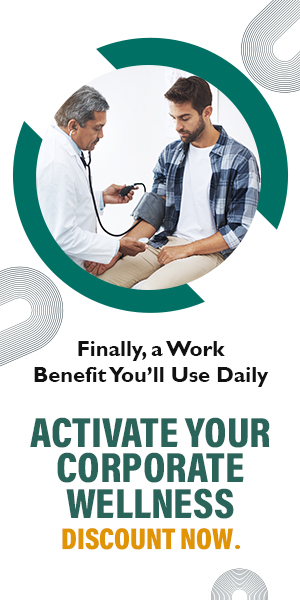Movement
5 Moves To Ease The Knot In Your Shoulders
A sedentary lifestyle, improper posture and your job may all be contributing to stiff shoulders. Try these 5 simple yet effective moves to release the knot in your shoulders.

If you’ve started feeling stiffness and pain in a particular point, chances are that you might be dealing with a muscle knot. Muscle knots can occur anywhere in the body. They can often show up in the back, neck, and gluteal muscles, too.
Unlock insider access to the best movement plans for free! Sign up today.
Muscle knots, also known as myofascial trigger points, are rigid and tender regions within the muscles that remain tight and contract even during periods of rest. When these taut muscle fibres are stimulated, they can induce pain in other areas of the body. Knots in the muscles usually happen when there is tension in the muscles of the back, shoulders and neck.
Related story: 5 Exercises To Beat Office Syndrome From UR.Life Expert
Causes of Muscle Knots
When you touch a muscle knot, it may feel swollen, tense, or bumpy. Muscle knots can cause aching sensations and pain in your muscles and joints. They could also feel tight and contracted, even when you’re trying to relax, and they’re often sensitive to the touch. The affected area may even become inflamed or swollen. Muscle knots can be caused by:
- Muscle overuse or repetitive strain: Engaging in activities that involve repetitive movements or placing excessive strain on particular muscles can lead to the development of knots.
- Muscle injuries or trauma: Accidents, sports injuries, or any form of muscle trauma can result in the formation of muscle knots.
- Stress and tension: Emotional or psychological stress can contribute to muscle tension and the development of knots, particularly in the neck, shoulders, and upper back.
- Sedentary lifestyle: Prolonged periods of inactivity, such as sitting at a desk for long hours without movement, can cause muscle stiffness and the formation of knots.
- Dehydration and inadequate nutrition: Insufficient hydration and nutrient deficiencies can affect muscle health and increase the likelihood of muscle knots.
- Muscular imbalances: Muscle imbalances, where certain muscles are stronger or weaker than their opposing counterparts, can lead to compensatory muscle tightness and the development of knots.
Related story: Best Moves For Desk Workers: Polymetric Exercises
Symptoms of Muscle Knots
The symptoms of muscle knots, also known as myofascial trigger points, can vary from person to person. The affected area of the muscle knot may feel tender to the touch or when pressure is applied. It's important to remember that these symptoms can be indicative of other conditions as well, so it's advisable to consult a healthcare professional for an accurate diagnosis and appropriate treatment.
Some common symptoms associated with muscle knots include:
1. Tenderness and restricted range of motion: Muscle knots can lead to stiffness and reduced flexibility in the affected muscle. You may find it difficult to move the muscle through its full range of motion.
2. Muscle tightness: The muscles surrounding the knot may feel tight or tense. This can cause discomfort or a sensation of stiffness in the surrounding area.
3. Referred pain: Muscle knots can refer pain to other areas of the body. For example, a knot in the neck or shoulder muscles can cause pain that radiates to the head, arm, or upper back.
4. Muscle weakness: In some cases, muscle knots can result in temporary weakness or fatigue in the affected muscle.
5. Numbness or tingling: In certain instances, muscle knots can compress nearby nerves, leading to sensations of numbness, tingling, or "pins and needles" in the surrounding area.
Related story: Rehabilitation Therapies At UR.Life To Ease lower Back Pain
5 Moves to Ease The Knot In Your Shoulders
When you’re looking to release a knot in your shoulders, there are various moves that can help you out. Remember to perform these moves with slow and controlled motions, and if you experience any pain or discomfort, adjust the intensity or consult a healthcare professional for guidance.
Here are five moves that can help alleviate knots in your shoulders:
1. Shoulder Rolls
- Stand or sit upright with your arms relaxed at your sides.
- Slowly roll your shoulders forward in a circular motion, completing several rotations.
- Then, reverse the direction and roll your shoulders backward. This movement helps loosen up the muscles and relieve tension in the shoulders.
2. Neck Stretches
- Sit or stand with your back straight. Gently tilt your head to one side, bringing your ear closer to your shoulder.
- Hold this stretch for 15-30 seconds, feeling a gentle pull along the side of your neck and shoulder.
- Repeat on the other side. You can also add variations by tilting your head forward, backward, or in a diagonal direction to target different areas of the neck and shoulders.
Related story: 10 Minutes Yoga Asanas For Back Pain
3. Upper Back Extension
- Stand against a wall with your feet about shoulder-width apart. Place your hands on your hips and gently lean back, allowing your upper back to arch slightly.
- Hold this position for 10-15 seconds, focusing on stretching the muscles between your shoulder blades.
- Repeat a few times to release tension in the upper back and shoulders.
4. Shoulder Blade Squeeze
- Sit or stand with your back straight and your arms relaxed at your sides.
- Squeeze your shoulder blades together as if you are trying to hold a pencil between them.
- Hold this squeeze for 5-10 seconds, then release. Repeat the movement several times to improve posture and relieve tightness in the shoulder area.
Related story: 6 Moves To Ease Back Pain
5. Arm Across Chest Stretch
- Extend one arm straight in front of you at shoulder height.
- Use your other hand to gently pull the extended arm across your chest until you feel a stretch in the back of your shoulder.
- Hold for 15-30 seconds and then switch sides. This stretch targets the muscles between the shoulder blades and can help relieve tension in the shoulders.
Unlock insider access to the best movement plans for free! Sign up today.
Rehabilitation Programmes Offered At UR.Life
UR Life Studio offers the following programs under its Lifestyle Management and Therapeutic Programs (LMTP) unit:
- Cardiac Rehabilitation
- Pulmonary Rehabilitation
- Neuro Rehabilitation
- Ortho Rehabilitation
- Paediatric Rehabilitation
- Geriatric Rehabilitation
- Obesity Management
- Diabetes management
Holistic rehabilitation approach involves the medical, physical, and mental aspects of overall health. Telemetry Supervised Rehabilitation is a state-of-the-art technique to provide optimal health care, hydrotherapy, six minutes walk test, hydraulics (circuit training studio), VO2 max testing (equipment under servicing), Myo motion analysis (equipment under servicing), detailed physical assessment, wellbeing counselling, and diet counselling.
EXPLORE MORE
Instead of chasing long workouts, micro-movement shifts the focus from “Did I work out today?” to “Did I move often enough today?”
Pressed for time but craving results? These high-impact exercises burn maximum calories in minimum time, when done right.
Simple, practical fitness advice to help you feel stronger, healthier, and more consistent in 2026.
Callisthenics isn’t about flashy Instagram moves or avoiding the gym. According to celebrity fitness and lifestyle coach Krishna Sadvale, it’s one of the most practical ways to build strength, control, and confidence in your own body.






.jpg)

.jpg)
.jpg)
